Shoulder Replacement Surgery in Dallas, Frisco, Prosper, and Wylie
What to Expect from Shoulder Replacement Surgery
Home » Surgeries We Perform » Shoulder Replacement Surgery in Dallas, Frisco, Prosper, and Wylie
Dallas Reverse Shoulder Replacement & Shoulder Arthroplasty
The shoulder has a greater range of motion than any other joint, but because it can perform many movements, it is also vulnerable to stress, injury, and arthritis. Arthritis is a major cause of shoulder pain and can cause restriction of motion. While the symptoms of shoulder arthritis may be tolerable with certain medications and lifestyle adjustments, there may come a time when shoulder replacement surgery is necessary.
Shoulder replacement surgery, also called shoulder arthroplasty, involves the replacement of the damaged bone and cartilage with metal and plastic implants. Shoulder arthroplasty is a treatment option that can relieve pain and restore mobility and function. People often tolerate their symptoms for long periods of time because the arm is not a weight-bearing extremity. For this reason, arthritis of the shoulder is not as common as in the hip and knee. As such, most people know someone who has had a hip or knee replacement, but many do not even know that shoulder replacement is an option.
At SPORT Orthopedics + Physical Therapy, our orthopedic doctors in Frisco and Dallas, TX, are committed to getting you back to your active lifestyle through quick and lasting recovery. We perform several different joint replacement surgeries, including shoulder replacement, ankle replacement, knee replacement, and hip replacement. Click below to schedule your appointment to return to your active, pain-free life.
Dallas Shoulder Surgeon for Shoulder Replacements
At SPORT Orthopedics + Physical Therapy, our talented, board-certified shoulder surgeons have extensive experience treating various orthopedic conditions. If conservative treatments fail to improve your shoulder joint pain and range of motion, or if you have suffered a serious shoulder injury, shoulder joint replacement may be necessary.
With considerable training and experience on their side, our Dallas orthopedic surgeons provide high-quality, compassionate care for patients. We will evaluate your symptoms, provide a diagnosis, and carefully explain your treatment options. Not every shoulder injury requires a shoulder joint replacement. However, certain injuries, such as severe shoulder fractures, necessitate surgery.
Dr. Robert Berry is a board-certified orthopedic surgeon in Dallas with fellowship training in sports medicine. He specializes in joint replacements, arthroscopic surgeries, ACL reconstructions, cartilage transplants, and fracture treatments. His skills as a surgeon have been honed over the years, making him the #1 Orthopedic Surgeon in Dallas, according to D Magazine.
In other words, you can rest assured that your shoulder joint replacement will proceed as smoothly as possible. By utilizing the latest techniques and technologies, Dr. Berry is adept at reducing patient pain and recovery times, as well as achieving stellar results.
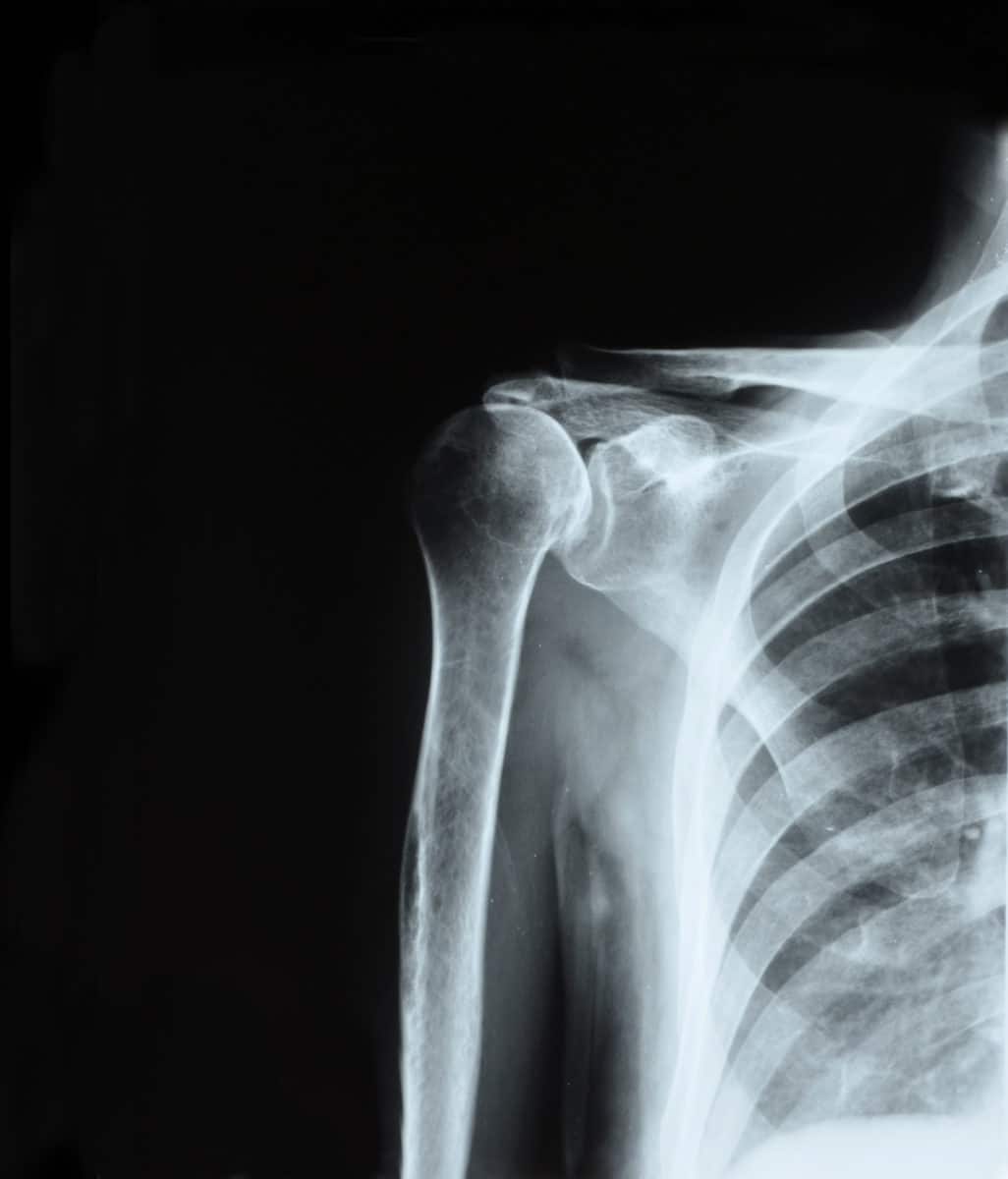
How Common Are Shoulder Joint Replacement Surgeries?
According to the American Academy of Orthopedic Surgeons, around 53,000 people in the United States have shoulder replacement annually. It has become an increasingly popular treatment option for various shoulder injuries and conditions. Examples of these conditions include torn rotator cuff tendons, severe pain from an arthritic shoulder, and avascular necrosis.
Compared to knee and hip replacements, shoulder replacements are noticeably less common. Knee and hip replacements make up a combined total of more than 900,000 surgeries yearly. Most patients and doctors opt for non-surgical treatments before resorting to surgery. However, certain serious injuries are best treated with surgery.
What Happens at the First Appointment for Shoulder Arthroplasty?
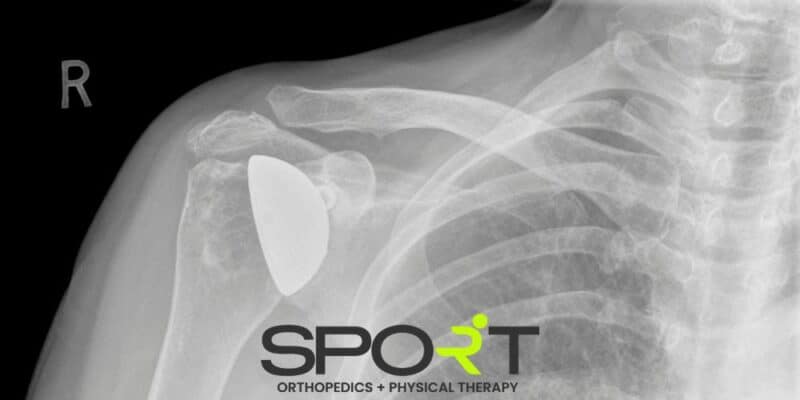
When you book your initial appointment with our team, we will begin by evaluating the state of your shoulder. This will include taking your medical history, performing a physical examination, and possibly taking X-rays. Physical exams help us to do two things: pinpoint the source of your pain and evaluate your range of motion.
We will also ask about your past shoulder problems, if you have had any. Specifically, we will ask about your pain level, range of motion, and any prior treatments you have had. Then, we may take X-rays to reveal damage or trauma to your shoulder joint. Imaging tests help us to determine which treatment is best for your situation.
After we gather the information we need, we will discuss your treatment options with you and prepare for the next steps.
Shoulder Joint Anatomy
The shoulder joint is a ball and socket joint made up of three main bones: the upper arm bone (humerus), collarbone (clavicle), and shoulder blade (scapula). Within the joint as a whole, there are actually two joints. These are the acromioclavicular and glenohumeral joints. The acromioclavicular joint is where the highest part of the scapula meets the clavicle.
The glenohumeral joint is where the top of the humerus (humeral head) fits into the glenoid, which is a socket in the scapula. This is what allows such a wide shoulder motion range. Both the ball and socket must be healthy and stable for the shoulder to function properly.
Other important structures in the shoulder joint include the following.
- Deltoid muscle: This is the strongest and largest muscle in the shoulder. It gives us the strength we need to lift our arms.
- Shoulder labrum: This is what surrounds the “socket” part of the joint. It helps to make the socket deeper, which provides more stability for the joint.
- Rotator cuff: This covers the top of the upper arm bone. It consists of tendons and muscles that help the arm rotate while holding it in place.
- Biceps tendon: This tendon attaches to the top of the shoulder socket and to the biceps muscle. It allows us to bend and rotate our forearms.
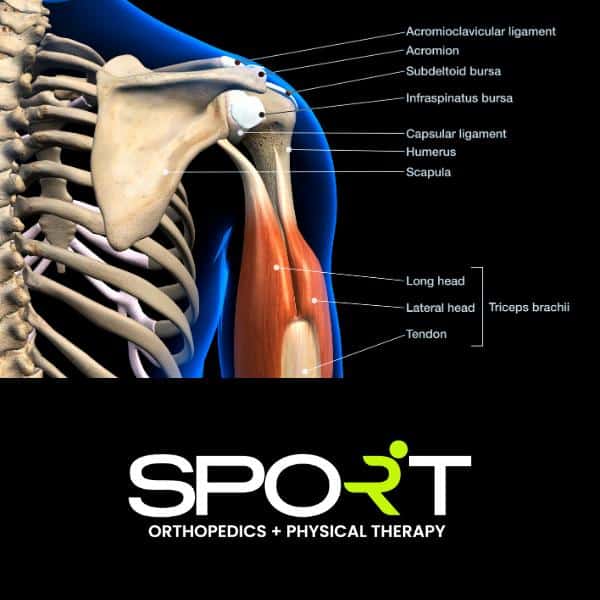
What Causes the Need for a Shoulder Replacement?
Often, shoulder replacements are performed to replace damaged parts of an otherwise healthy shoulder joint. A torn rotator cuff, previous shoulder replacement, arthritis, osteoarthritis, and avascular necrosis are among the most common reasons for shoulder replacements.
Arthritis
Arthritis is a major cause of pain, stiffness, and swelling in the shoulder. Arthritis can occur for many reasons, including aging, “wear and tear,” injury, autoimmune disease, and inflammatory disease. There are over 100 different types of arthritis. Osteoarthritis, post-traumatic arthritis, and rheumatoid arthritis are the ones that frequently develop in the shoulder. Post-traumatic arthritis can develop in individuals of all ages after a shoulder injury, such as a fracture.
Osteoarthritis
Osteoarthritis tends to develop as people age. It causes the cartilage covering the end of the bones to wear away gradually, resulting in painful bone-on-bone rubbing. Abnormal bone growths, called spurs, can grow in the joint. The bone spurs add to the pain and swelling while disrupting movement.
Rheumatoid Arthritis
Rheumatoid arthritis is one of the most serious and disabling types of arthritis. It can affect people of all ages, but most frequently occurs in women and those over 30. It is a long-lasting autoimmune disease that causes painful inflammation of the synovium. Rheumatoid arthritis also causes joint swelling and deterioration and can affect issues surrounding the joint. Pain, stiffness, and swelling are usually ongoing symptoms, even during rest.
Rotator Cuff Injuries
Some people who have had a rotator cuff injury for a long time may develop rotator cuff tear arthropathy. Eventually, arthritis can develop from rotator cuff tears, which leads to the destruction of the joint cartilage.
Avascular Necrosis
Shoulder replacement surgery may also be a treatment for avascular necrosis. This medical condition causes a lack of blood flow to the head of the humerus bone, causing it to die. Several factors, including chronic steroid use, deep sea diving, severe fractures, sickle cell disease, and heavy alcohol consumption, can cause avascular necrosis.
For more potential causes of shoulder pain, look at our shoulder pain diagnosis chart.
What Are the Signs You Need a Shoulder Replacement?

A deep ache is the primary symptom of shoulder arthritis. Inflammation, swelling, and stiffness are also symptoms. In the early stages of arthritis, your shoulder pain may worsen with movement or activity. As time passes, the pain may become continuous, becoming severe enough to keep you awake at night and interrupt your ability to do everyday tasks, such as putting on a belt or carrying groceries.
Arthritis can make your joints feel weak or unstable. Your shoulder may feel like it “grinds” or “catches” when you raise your arm, and you may have difficulty moving it. This can make it challenging to complete common activities, such as putting on your shirt or washing your hair.
Your doctor may diagnose arthritis by conducting a physical examination. You will likely be asked to perform simple arm and shoulder movements to help your doctor assess your muscle strength, joint motion, and stability. Blood tests and other laboratory tests may identify what type of arthritis you have.
From there, your doctor will determine whether you require a shoulder replacement. Shoulder arthroplasty is recommended when non-surgical treatments have provided minimal or no improvement of your symptoms.
What Are the Types of Shoulder Replacement Surgeries?
There are a few different types of shoulder replacement surgeries. The most common types of shoulder replacement surgery include total shoulder replacement, reverse total shoulder replacement, and partial shoulder replacement. Total shoulder replacement surgery is recommended for people with bone-on-bone osteoarthritis and intact rotator cuff tendons. This is the most common type of shoulder replacement surgery.
In the following sections, we outline the differences between each major type of shoulder replacement procedure.
What Is Reverse Shoulder Replacement?
Another type of surgery is called a reverse shoulder replacement. A reverse shoulder replacement surgery is recommended for people with completely torn rotator cuffs, severe arthritis with cuff tear arthropathy, or prior failed shoulder surgery. Traditional total shoulder replacement would still leave these individuals with pain and the inability to lift their arms above their shoulders.
In a reverse shoulder replacement surgery, the ball and the socket are switched. The metal ball is attached to the scapula, and the socket is attached to the end of the humerus. This allows the deltoid muscles, instead of the damaged rotator cuff muscles, to lift the arm above the shoulder.
What Is a Partial Shoulder Replacement?
A partial shoulder replacement is also called a shoulder hemiarthroplasty. It involves replacing the humeral head with a prosthetic implant. The socket of the joint, however, is untouched. This method of replacement is generally recommended for patients who have suffered damage to only the ball of the joint.
What Is a Total Shoulder Replacement?
A total shoulder replacement is a procedure in which both the ball and socket of the shoulder joint are removed and replaced with prostheses. Total shoulder joint replacement is also known as traditional shoulder replacement surgery and anatomic total shoulder replacement. A reverse total shoulder replacement is the same surgery, except the prostheses are switched.
The metal prosthesis is attached to the scapula, while the metal socket is attached to the end of the upper arm bone.
What Is Shoulder Arthroplasty?
Shoulder arthroplasty is another term for shoulder replacement surgery. A partial shoulder arthroplasty involves replacing either the ball or the socket. A total shoulder arthroplasty involves replacing both the ball and socket.
How Long Does Shoulder Replacement Surgery Take?
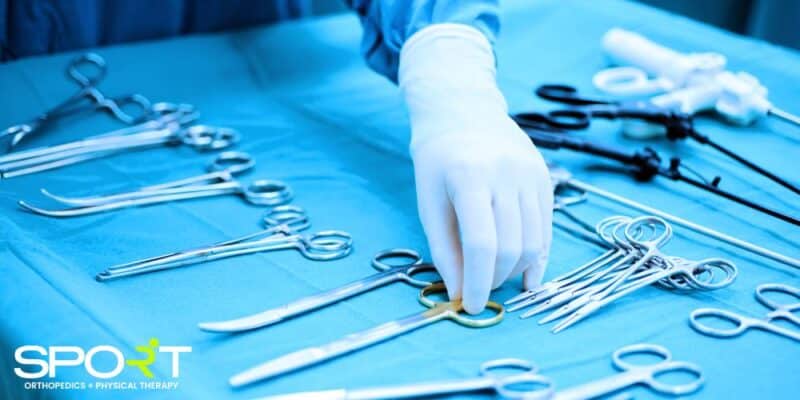
Shoulder replacement surgery is an inpatient procedure; you may expect to stay in the hospital for a day or two following your surgery. The surgery itself typically takes a couple of hours. Allowing time for the anesthesia and prep before surgery, it will likely fall somewhere around 3 hours altogether. You will require general anesthesia or a regional nerve block for the procedure.
For this procedure, your surgeon will make an incision approximately six inches long, on the front of your shoulder joint. Your surgeon will replace the damaged head of the humerus with a highly polished metal ball. The metal ball may be surgically implanted in the humerus or attached with surgical cement, depending on the condition of the bone. The glenoid is replaced with a plastic socket.
In some cases, the surgeon may only replace the head of the humerus in a hemiarthroplasty procedure. This procedure is used if the glenoid cartilage is in good condition. A hemiarthroplasty is most commonly used to treat shoulder fractures.
How Long Is the Shoulder Replacement Recovery Time?
Your shoulder will need several months to recover from the surgery fully. Your surgeon will restrict your arm movements for a short period of time following your procedure, and you will need to wear an arm sling. Our experienced Dallas physical therapists will help you gently move your arm starting the first day following your surgery, or even on the day of surgery. You will gradually work to strengthen and increase the movement in your shoulder over time.
Generally, shoulder arthroplasty rehabilitation can take anywhere from three to six months. Ultimately, your recovery time will depend on the extent of your condition and the extent of your surgery. Your surgeon will let you know what to expect. Overall, most people experience an improved quality of life because of the decreased pain and improved function that shoulder arthroplasty allows.
What Can I Expect During Reverse Shoulder Replacement Recovery?
Following your shoulder replacement, your doctor will provide pain medication and antibiotics for pain relief and reduce your risk of infection. Most patients can get out of bed and move around the day following their surgery and can return home only a couple of days later.
After surgery, you must keep your arm in a sling for a few days. As for rehabilitation, we will provide you with several exercises that can help increase your endurance and mobility and speed up the recovery process. Physical therapy will also likely be required as part of your recovery regimen.
You should be able to return to normal everyday activities like grooming and dressing yourself a few weeks after the procedure. Your doctor will schedule a follow-up appointment to ensure your shoulder is healing correctly.
What Can I Expect During Total Shoulder Replacement Recovery?
In general, patients will have the following recovery timeline.
- 1-4 days after surgery: You will have pain and swelling that should lessen over time.
- 1-2 weeks after surgery: This is the period during which you will begin gentle physical therapy exercises.
- 2-6 weeks after surgery: You may be asked to wear an arm sling. You can resume light activity with the affected arm, like picking up a glass of water or preparing food that requires no cooking.
- 8-12 weeks after surgery: During this period, you can gradually return to normal function.
Are There Any Permanent Restrictions After Shoulder Replacement Surgery?
You will notice an immediate change in the movement of your shoulder following replacement surgery. It will move more freely and smoothly. However, in the weeks following the surgery, you may experience serious pain and discomfort. After about two weeks, the pain should begin steadily decreasing.
It is important to be cautious during this time. Don’t rush to get back to the regular swing of things. You may need to alter your routine to accommodate your healing shoulder. Avoid picking up heavy objects or unnaturally positioning your arm. For most of your recovery, your arm will remain inside the sling, and you shouldn’t attempt to do anything that requires taking your arm out of it.
It may be between four to six weeks before you can pick up objects heavier than a glass of water or get behind the wheel of a vehicle. In the meantime, you should complete physical therapy and at-home exercises to ensure your shoulder heals quickly and correctly. Many total shoulder replacement patients have a permanent weight lifting restriction of 30 lbs for the affected shoulder.
How to Sleep After Shoulder Surgery
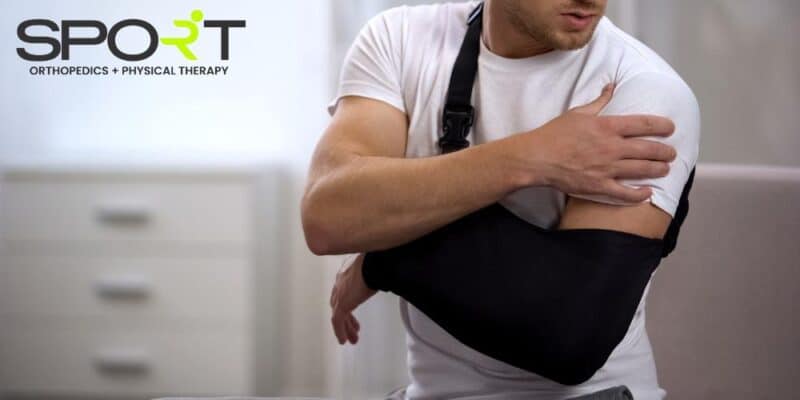
This is a very common question we get from patients who have either had shoulder surgery or who are considering it. It’s important to understand the best ways to remain comfortable at night, as rest is extremely important for a swift recovery.
Below, we list helpful tips for how to sleep after shoulder surgery.
- Wear an arm sling at night. This will keep your shoulder stationary throughout the night, which encourages healing. It also prevents you from moving your arm into a painful position.
- Apply a cold compress before bed. Cold therapy helps reduce pain and inflammation. This can help you fall asleep. Apply the cold compress for no more than 30 minutes.
- Sleep on an incline. This will help reduce how much you move around at night. It can reduce the amount of pain you have when you wake up.
- Place a pillow between your body and arm. Prop up the arm on the affected side of your body to encourage blood flow and prevent numbness and cramping.
Is Shoulder Replacement Surgery Worth It?
Many patients’ shoulder pain responds well to conservative, nonsurgical treatments. However, conservative treatments don’t work for everyone. If you have a serious shoulder condition or injury that has not responded to conservative treatments, a shoulder replacement is likely your best option. Shoulder replacements can provide significant pain relief and improved range of motion for patients.
Pros and Cons of Shoulder Replacement Surgery
There are both pros and cons when it comes to any joint replacement surgery. This includes shoulder replacements. Shoulder replacement can significantly help patients with chronic shoulder dislocation, complex shoulder joint fractures, and joint tumors. The biggest and most obvious pro of a shoulder replacement is that it stabilizes the joint and recovers mobility. Overall, the surgery helps individuals who have run out of alternative, non-surgical options restore function to their damaged shoulder and regain their active, pain-free life.
The cons of shoulder replacement surgery are essentially the risk factors that are typically associated with most surgeries. This includes risks like infection, blood vessel damage, and nerve damage. It also poses the risk of shoulder dislocation or loosening of the artificial joint.
Shoulder Replacement Surgeon in Dallas & Frisco
At SPORT Orthopedics + Physical Therapy in Dallas, Frisco, Prosper, and Wylie, one of our board-certified orthopedic surgeons will perform your shoulder replacement. With years of experience and many successful surgeries behind him, you will be back in the game in no time. We also offer other surgical orthopedic services for various joints, such as elbow surgery, knee surgery, and more.
If you believe you may need shoulder arthroplasty, schedule an appointment with us today. You can contact us by calling 469-200-2832 or completing our online intake form. We also accept walk-ins and offer Saturday hours.


